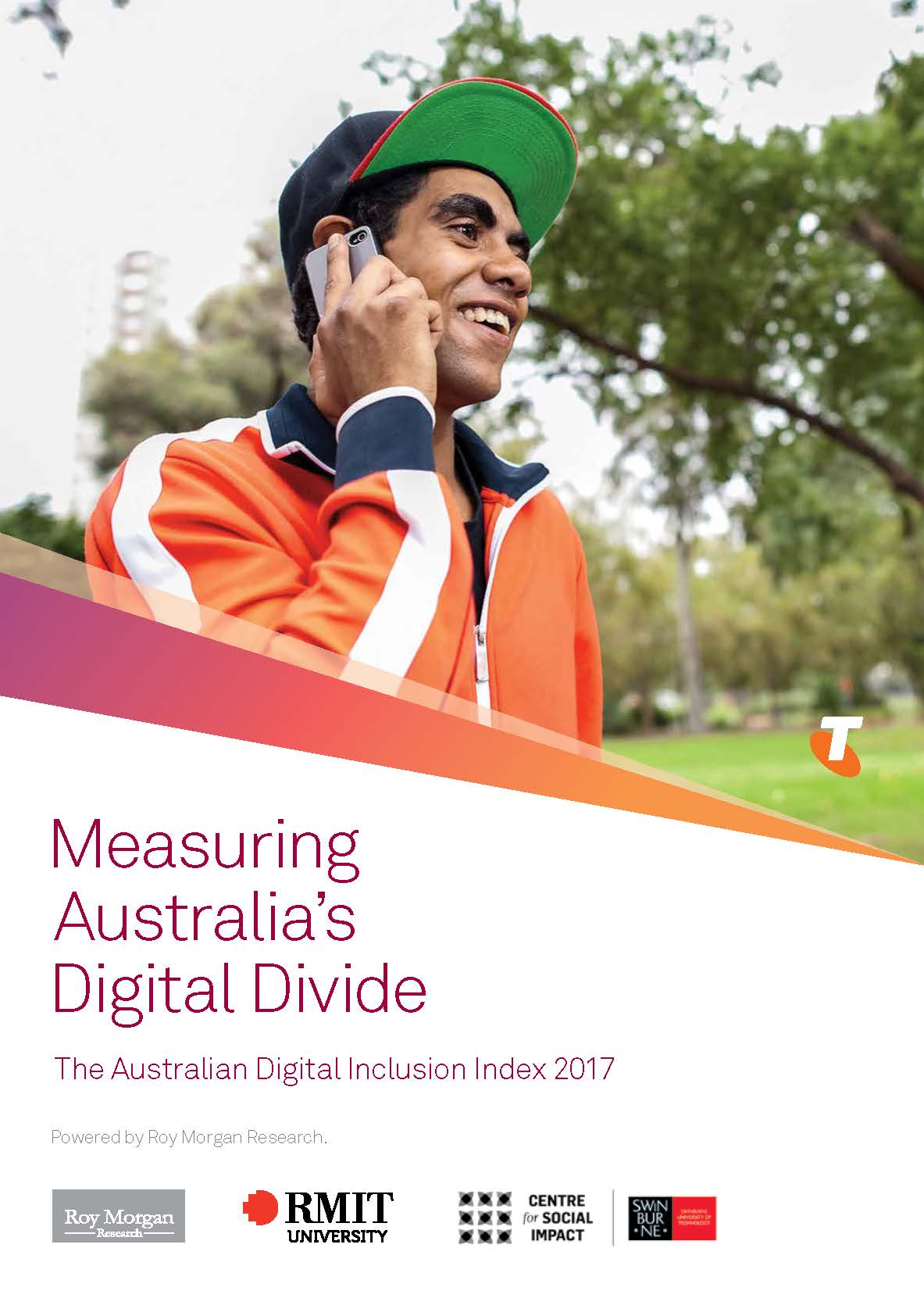This case study was originally published in the 2017 Australian Digital Inclusion Index report, and is derived from the Roy Morgan Single Source dataset. As of 2021, the Australian Digital Inclusion Index is based on the Australian Internet Usage Survey (AIUS). The numerical results of this case study cannot be compared with the refreshed ADII data.
Australians are enthusiastic adopters of smart phones. According to a recent worldwide Pew study, only the South Koreans have higher rates of ownership.1 For many of us, mobile devices and mobile broadband are valuable ways of accessing the internet, and we use them in addition to fixed line services. Mobiles add a personal and flexible dimension to our use of fixed line computers at home, work, or school. They are outward signs of highly-connected lives.
But for people who have no fixed internet access, it’s a different story: smart phones offer great advantages, but also involve trade-offs and costs. Low-cost smart phones are more affordable than traditional computers, and mobility is a great benefit. But while devices can be cheap, mobile internet access remains comparatively expensive. There are also limits to what people can do with mobiles when it comes to accessing government services, education, or work.
The ‘mobile-only’ group now represents a substantial minority of Australia’s population. But we know little about this group, despite useful recent research.2 We do know that more than four million Australians – that’s one in five – only access the internet through a mobile phone or internet dongle with a data allowance. Despite all the benefits of mobile internet, this group is relatively digitally excluded.
The ADII sheds some light on this. In 2017, mobile-only users have an ADII score of 42.3, some 14.2 points below the national average (56.5), and 2.5 points below the 2014 outcome (44.8).
Over the same period, the national average rose by 3.8 points, so the relative inclusion of mobile-only users is declining. Mobile-only use is linked to socioeconomic factors, with people in low income households (29.8%), not employed (24.0%), and with low education levels (27.6%) more likely to be mobile-only. The ADII reports a particularly high level of mobile-only use for Indigenous Australians, at 49%.
Household composition is also a key factor in mobile-only use. Those living alone or in share housing are significantly more likely to be mobile-only (32.2% and 28.8% respectively), while those living with a partner and children are much less likely to lack fixed broadband (15.6%).
The ADII reports considerably lower digital inclusion levels for mobile-only users across all three sub-indices. On Affordability, mobile-only users scored low (33.3 points, 19.4 points below the national average figure). This is due to the higher pricing and cost structure of mobile broadband. While mobile data charges have reduced in recent years, a gigabyte of mobile data costs much more than the fixed broadband equivalent.
Mobile-only users are also less digitally included than the general population in terms of Access (54.1, against 69.6 for Australia-wide) and Digital Ability (39.5, against 47.3 for Australia-wide).
These outcomes reflect constraints in mobile-only services which extend beyond cost issues. In terms of Access, mobile-only users have far less data available than fixed line customers. In relation to Digital Ability, the gap between mobile-only users and the wider population is greatest for more advanced online Activities (30.4, against 38.4 for Australia). This points to the fact that for all their convenience, mobile devices have more limited capacities than desktop or laptop computers. The limitations of mobiles have repercussions for many everyday uses of the internet. Tasks such as completing complex forms can be difficult; many web pages do not display readily or completely in mobile form; work and school-related applications such as word processors or spreadsheets may be difficult to access or use. The ADII reports that even mobile-only users in high income households, and those with a tertiary education, score lower on Digital Ability than their fixed line counterparts.
The ADII’s findings for mobile-only Australians highlight the complexity of the digital inclusion challenge. For this group, issues of Affordability and Digital Ability are clearly as important as Access. While mobile services are evolving quickly, the large number of mobile-only users raises the possibility of an increasingly stratified internet, rather than a more inclusive one.
In this light, initiatives such as free or subsidised Wi-Fi services are likely to become increasingly important as inclusion measures. The functionality of web pages on mobiles phones is another area that will require attention.
Further information
For more information, including related data tables and the full citation list, please refer to the 2017 Australian Digital Inclusion Index.
References and footnotes
[1] Pew Research Center (2016). ‘Smartphone Ownership and Internet Usage Continues to Climb in Emerging Economies’. Pewglobal.org
[2] Australian Communications and Media Authority (2015). ‘ACMA Research Snapshot: Australians get mobile’. Acma.gov.au; Humphrey, J. (2014). Homeless and Connected: Mobile phones and the Internet in the lives of homeless Australians, Australian Communications Consumer Action Network, Sydney; Ogle, G. and Musolino, V. (2016). Connectivity Costs: Telecommunications Affordability for Low Income Australians, Australian Communications Consumer Action Network, Sydney; The Salvation Army (2017). Economic and social impact survey 2017: The hard road. Blackburn, Victoria.
Citation
Thomas, J, Barraket, J, Wilson, C, Ewing, S, MacDonald, T, Tucker, J & Rennie, E, 2017, Measuring Australia’s Digital Divide: The Australian Digital Inclusion Index 2017, RMIT University, Melbourne, for Telstra. DOI: www.dx.doi.org/10.4225/50/







